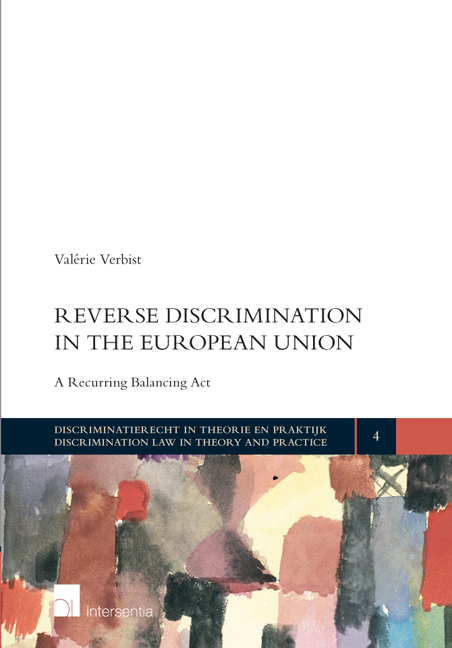Book contents
Chapter 1 - Introduction
Published online by Cambridge University Press: 29 September 2018
Summary
PROBLEM DEFINITION: DISCRIMINATION AND REVERSE DISCRIMINATION
EQUALITY AND NON-DISCRIMINATION
The principle of equality is enshrined in various international instruments and in national constitutions. The classic definition of equality is that of Aristotle, according to which cases that are alike should be treated alike. The principle of equality is complemented by the principle of non-discrimination. Discrimination takes place when two cases that are alike are treated differently without a sufficient justification, or when two different cases are treated as though they are alike without a sufficient justification being given.
However, the idea of equality has been criticised for being hollow and incomplete. The particular question that arises is: what are cases that are alike? It is clear that the cases do not have to be identical because ‘ no two people are alike in every respect’. However, in what respects should they be similar in order for them to be treated alike? In other words, when is ‘relevant resemblance’ at stake? Westen's definition seems to take this concern into account. He defines equality as being ‘the comparative relationship that obtains between two or more distinct persons or things by virtue of their having been jointly measured by a relevant standard of comparison and found to be indistinguishable by reference to that standard’.
Hart has observed that ‘the criteria of relevant resemblances and differences may often vary with the fundamental moral outlook of a given person or society’. That is to say, for instance, that only men had equal access to justice in Ancient Greece; slaves and women were excluded. Another example can be found in the USA's Declaration of Independence which, although it determined that ‘all men are created equal’, did not include slaves in 1776. As AG Sharpston has summarised, who and which aspects of ‘economic, social, political and personal life’ are covered by the principle of equality evolves over time in societies. Next, the law reflects this change by prohibiting certain forms of discrimination that have gone ‘previously unnoticed or (if noticed) tolerated’.
- Type
- Chapter
- Information
- Reverse Discrimination in the European UnionA Recurring Balancing Act, pp. 1 - 18Publisher: IntersentiaPrint publication year: 2017



